Madagascar - The Vezo Hospital
Madagascar - The Vezo Hospital
The Vezo Hospital, Andavadoaka, Madagascar (2016)
by Philipp Scaglia, Faculty of Odontology, Malmo University, Sweden.
Introduction
Vezo Hospital is a volountary hospital located in the village of Andavadoaka in southern Madagascar. It is managed by the Italian, Bologna-based humanitarian, non-profit, non-governmental organisation “Amici di Ampasilava”.
This presentation is based on information and pictures collected in Andavadoaka, Madagascar by Philipp Scaglia, dental student from the Faculty of Odontology, Malmö University, Sweden, July 2016.


Andavadoaka is located southwest coast of Madagascar in the Toliara Province
Background
Madagascar is one of the poorest countries in the world.The oral health care is limited with only two dentists for every 100,000 people. In addition, the majority of the dentists are private practitioners and are often located in major cities. Infrastructure is lacking and many of the villages in rural areas are very isolated so the inhabitants do not have access to proper oral health care.
Vezo hospital was built in 2008 in Andavadoaka, a small fishing village located on the southwest coast of Madagascar. Since then it has become important for Andavadoaka and all the surrounding villages that are not served by proper medical and dental care.
The hospital is financed exclusively by donations. The organisation provides board and lodging for the volunteers. During the last 8 years of activity there has been over 600 volunteers that have offered their services at the hospital. The organisation ensures that there are always doctors available at the hospital in different time of the year. The health care is always active and offers all year round services for the patients. At the hospital each year approximately 20, 000 examinations are accomplished, including both dental and medical examinations. The hospital has a catchment area of circa 200 km² so many people have to walk long distances to reach the hospital because of the lack in infrastructures.
The local medical staff consists of a general surgeon an obstetrician and a physiotherapist. Another central part of the hospital staff consist of the local translators. These people assist the medical staff with their procedures and make the communication between care providers and patient possible.
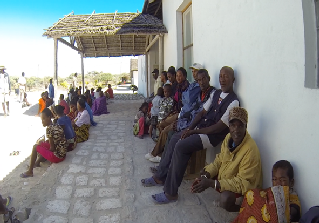
Patients outside the dental clinic
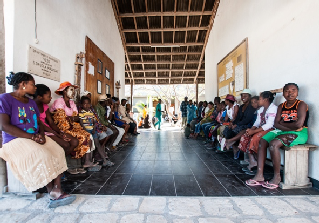
Main entrance of the hospital
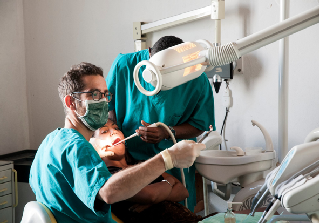
Extraction of carious teeth was the most common treatment

Interviewing the patient with the help of the translator
Achievments
Besides healthcare, the organisation is engaged in different projects that aim to increase the living standards of the inhabitants of the village.
An aqueduct, that will provide water is being built. This will cater for basic food and other hygiene needs.
An Internet connection has been established to give the inhabitants mobile network access and ensure specialist consultancy from other doctors at the hospital.
All year round, volunteers including surgeons, dentists and nurses visit the hospital and provide health care services. All the patients that visit the hospital get a code connected to a computerized medical chart where all the clinical data is saved.
Dental technicians volunteers offer prostheses for the edentulous patients
School children from the village are provided oral hygiene education by oral health volunteers to make them realize the importance of proper oral healthcare.
Dental care is provided for the patients attending the hospital that mainly include extractions, restoration, scaling and oral health education including tooth brushing.
Every student got a new toothbrush and one toothpaste (500ppm F).
During the two months July-August 2016, 316 dental patients where examined including children and adults. Common treatment involved extractions of carious teeth and scaling. Oral health education was given at the local school to two seventh grade classes with a total of 140 students.
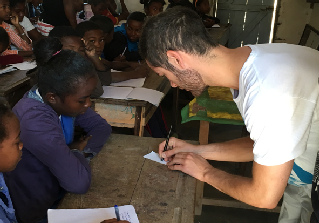
Interviewing schoolchildren regarding oral health habits
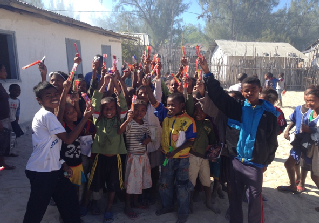
Happy schoolchildren after the oral hygiene lesson

Teaching 12-year old children the correct brushing technique
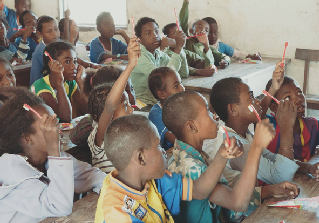
Providing new toothbrushes and fluoride toothpaste to all the students
Conclusion
In rural and isolated areas with poor health care infrastructure, people have to travel long distances to receive dental and medical care, hence many do not go to the dentist and are not aware of proper oral hygiene habits.
Overall, the general dental health of the population attending the dental practice in Andavadoaka is compromised. Almost every patient that visited the hospital was suffering from untreated tooth decay. Also periodontal disease was a very common problem. The dental health problem is not likely to be solved just by delivering dental care, but focus needs to be on prevention, good oral hygiene and dietary habits.The introduction of a specifically designed prevention programme and introducing oral health education to school children will probably have a positive effect on the general oral health of the younger population. This will also involve educating local school teachers to give lessons on oral disease prevention, so that more people understand the importance and the relevance of a good oral and dietary habits.
In conclusion there is a high need for dental care combined with proper oral health education for the people of Andavadoaka. In a country where access to dentistry is very limited, small changes can be made that will ensure big improvements in the overall oral health status of the locals.
Download file: Full document (PDF)
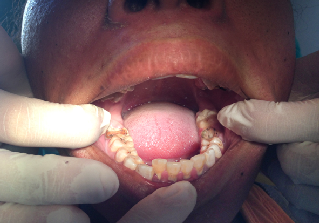
The dental status of a 16 year old girl, the presence of untreated deep carious lesions is common
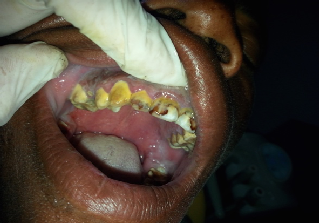
The presence of calculus as a result of lacking oral hygiene habits
Acknowledgements
This project was made possible thanks to the MFS scholarship from SIDA.
